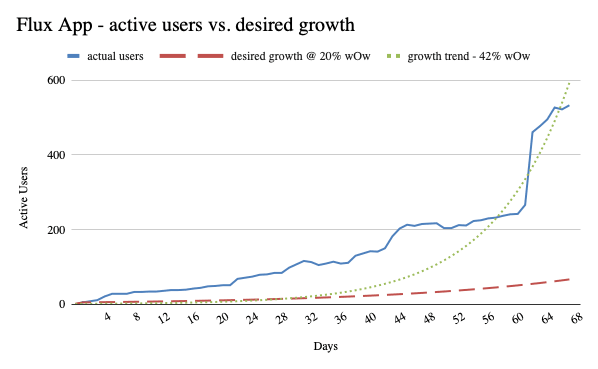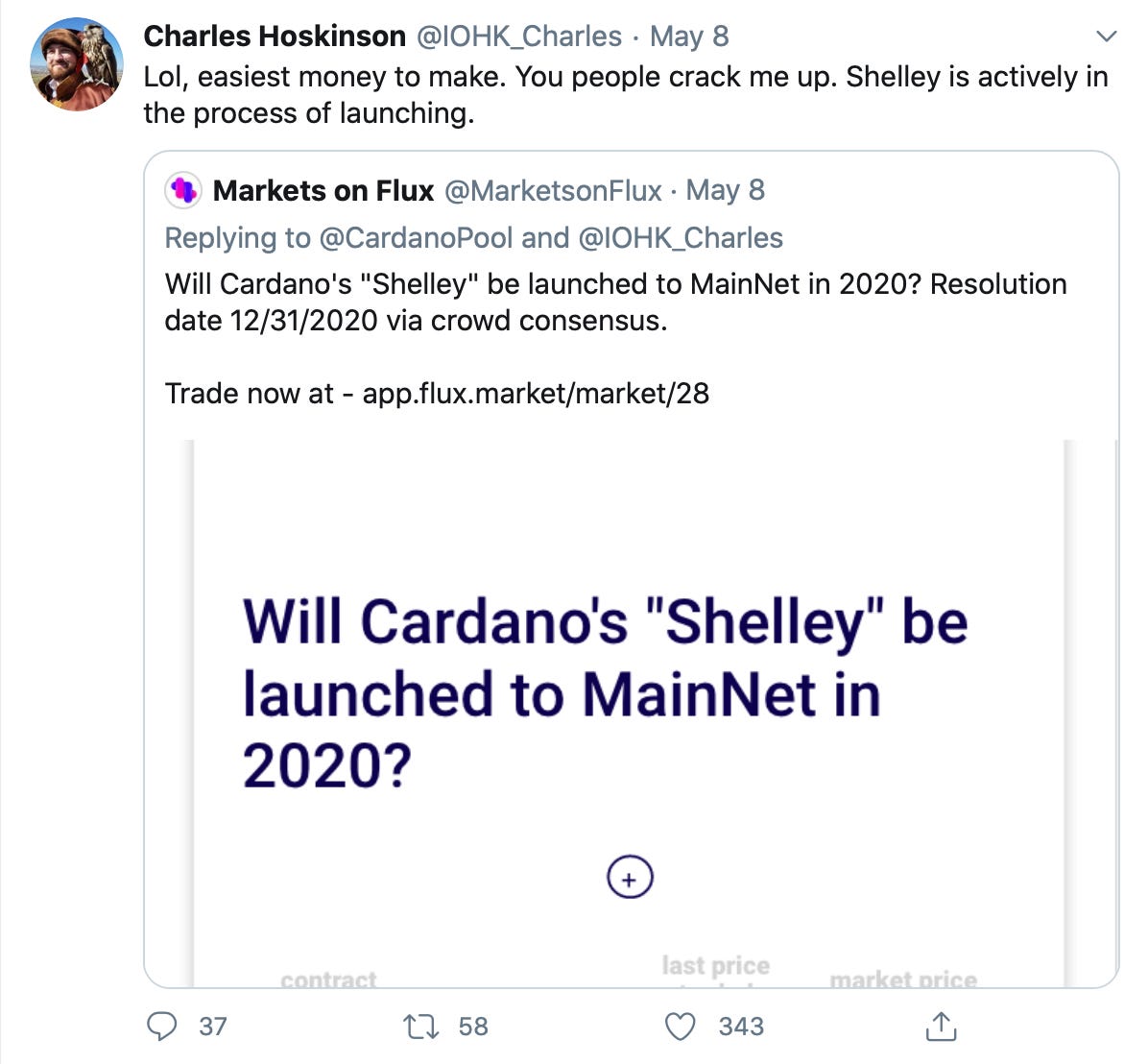
Flux & OWC
We are proud to be the first project accepted into the Open Web Collective and one of the first to participate in the NEAR beta program starting in August 2019. When we joined, we threw away preconceived notions and worked with OWC to create new mental models from existing frameworks that are tried and tested from top industry leaders in tech. Our main milestones for OWC were to hit 500 active users and three developers building on Flux Protocol with our SDK in 4 months.
Mental Models
We joined OWC at the precipice of COVID-19 and subsequent market crash. This environment was impactful when formulating our thesis for Flux. To start, we developed a road map to decentralization, which outlined crucial steps to gradually transfer power over Flux from the company over to the community (modeled after Jesse Walden’s post - Progressive Decentralization). After formulating our roadmap, we centered on breaking our time up, focusing 50% on product and 50% on traction.
Framework I:
We modeled our traction plan after Gabriel and Justin’s book “Traction,” which includes the “Bullseye” methodology that serves as a framework to test and iterate using 19 unique distribution channels. We then looked at each popular use-case of Flux and used this framework to reach users in each vertical and distribution channel.
Framework 2:
As an early-stage startup, it’s imperative to spend your time wisely and effectively. There are ten verticals we focused on with approximately 15 effective channels each. To adequately utilize these channels, we employed Garry Tan’s Timebox framework. This framework allowed us to hyper-focus for seven days on each vertical, see what worked, what didn’t, and then move on.
Day 1 to 60
In the past 60 days since starting OWC, we have shipped over 16,000 lines of code over 214 commits. These commits include the launch of V0.2 of our protocol, the Flux open-source app, and Flux SDK.
With our goal to reach 500 organic active users in 16 weeks, this would require a 20% week-over-week growth. We blew through this milestone eight weeks early and have achieved an active user growth rate of 42% week over week from our distribution experiments.

In addition to active users, there have been over 2,200 downloads of the Flux SDK.
Key Learnings
While testing these distribution channels, we had a few key theories:
Assumption: Twitter is an excellent place to share posts with existing users and serves as a landing spot for users from our app
Reality: Twitter served as a significant inbound traffic source for our app ( +80% of growth ) We tweeted some markets relating to current events and crypto that drove +200 users.

Assumption: There are many high-quality discord servers, we can target these users and pull out active communities and bring them over to Flux app/discord
Reality: Although some users converted to the app, the conversion cross-discord was low. It takes time to build rapport with a community; they have to see the value it creates for them before they convert. The inter-discord conversion was below 1% but served as a great way to engage existing users of Flux
Assumption: Interactive content and blog posts would help boost activity
Reality: We created a lot of digestible content, videos, technical docs, and did interviews which all lead to higher interaction
All of these critical assumptions were levers that we can pull and tweak, but all align with the same learning. Working in the open and being transparent with the community keeps our team accountable and enables us to build an interactive community that spreads beyond our reach and creates an ownership mentality among users and developers.
What was the drive behind these experiments?
Flux is built on the protocol level, which in short means that at least in the beginning, we aren't creating any consumer-facing products. So why do all of these traction experiments with our open-source app?
In crypto, a shared mental model is, "If we build it, they will come" — this assertion is incorrect. At Flux, we believe it's essential to guide developers to strong starting points for traction. With these experiments, we have identified our "hard-core" users in each vertical. Businesses developing on Flux can now use these experiments as a blueprint for their initial go-to-market strategy.
Now that we have done our initial experiments with traction, we are shifting our focus to scaling. With our next tests, we will be developing and employing frameworks/models to attract users in more significant batches -- stay tuned!
What is Open Web Collective?
The Open Web Collective is a community of founders working on a diverse range of protocols, apps, and software in the crypto space. Open Web Collective offers insight for ideation, go-to-market, fundraising, scaling traction, product-market-fit, among many other support channels.

